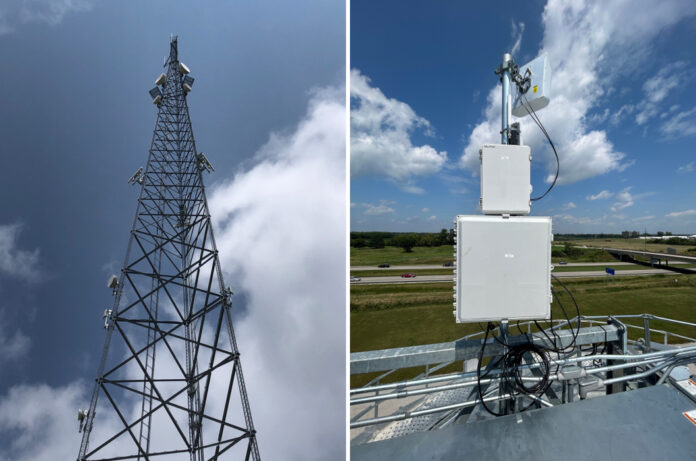Rural PAWR testbed has quadrupled its reach since launch last year
The rural testbed of the Platforms for Advanced Wireless Research (PAWR) Project Office has quadrupled its coverage area in the past year as part of its second phase of operations, as well as adding new research capabilities.
The Agriculture and Rural Communities, or ARA, testbed in central Iowa is hosting its second AraFest event this week to share its current capabilities and related research projects. It is also participating in the Farm Progress Show, which coincides with AraFest24 and is billed as the largest outdoor farm event; it focuses on new agricultural technologies and services.
The fourth and only rural testbed for the PAWR program focuses on new strategies and technologies for expanding rural broadband, and uniquely rural applications for advanced wireless technologies. ARA was announced in 2021 and become operational in the fall of 2023.
ARA now extends to a total of seven base stations and has “dozens” of software-defined radios, according to a release. After launching with four original sites, the second phase of ARA’s expansion included adding its wireless x-haul and Radio Access Network infrastructure to three additional sites in neighboring small cities. Each of towers has software defined radios (SDRs) from NI, Skylark massive MIMO (mMIMO) antenna arrays and Aviat microwave radios for backhaul.
The platform uses OpenAirInterface and Aether software to enable 5G and O-RAN end-to-end, open-source networking from the mobile cores down to the base stations and user endpoints, according to ARA. The Skylark massive MIMO arrays come include open APIs for configuring frequency, power, user grouping and other features.
ARA also says that it maintains the only known commercial-grade 5G Standalone network for research, which is supported via Ericsson radios across the four original ARA sites. Application-level experiments are able to be explored on the 5G SA network, and ARA said that several of these will be demonstrated this week at both AraFest and the Farm Progress Show.
ARA said that its expanded reach presents new opportunities for at-scale wireless research.
“ARA will be a game changer for rural communities,” said Professor Hongwei Zhang, who is ARA’s principal investigator and director of Iowa State University’s Center for Wireless, Communities and Innovation (WiCI). “By creating a Living Lab environment, we can experiment with new technologies, gather real-world data, and adjust our solutions to provide the best possible outcomes.
He continued: “This isn’t just about connectivity—it’s about fostering innovation, driving local economic development, and enabling rural communities to fully participate in the digital economy. We believe this platform will serve as a model for other rural regions around the world. With our focus on community and open source implementations we are creating a system that not only brings connectivity but also transforms how rural areas interact with technology.”
“I am so impressed by ARA’s level of progress over the last twelve months,” said Mari Silbey, Program Director for the PAWR Project Office. “Beyond the physical expansion of the testbed, ARA has experienced rapid user growth and sparked numerous new collaborations including several NSF AI Institute projects and commercial partnerships. Since being designated an Open Test and Integration Center (OTIC) by the O-RAN ALLIANCE in 2023, ARA has also demonstrated its commitment to enabling new Open RAN technologies. It’s exciting to see the team continue to lower the barrier to entry for wireless research and foster innovation that will drive U.S. technology leadership for decades to come.”
The PAWR program has three other active testbeds: One in Salt Lake City, Utah with a software-defined, end-to-end wireless network and massive MIMO; one in West Harlem in New York City, focused on millimeter-wave research and innovation in backhaul technologies; and a third being built in the Research Triangle area of North Carolina that focuses on wireless communications and unmanned aerial vehicles. The National Science Foundation funds the $100 million PAWR program, which is administered by US Ignite.

